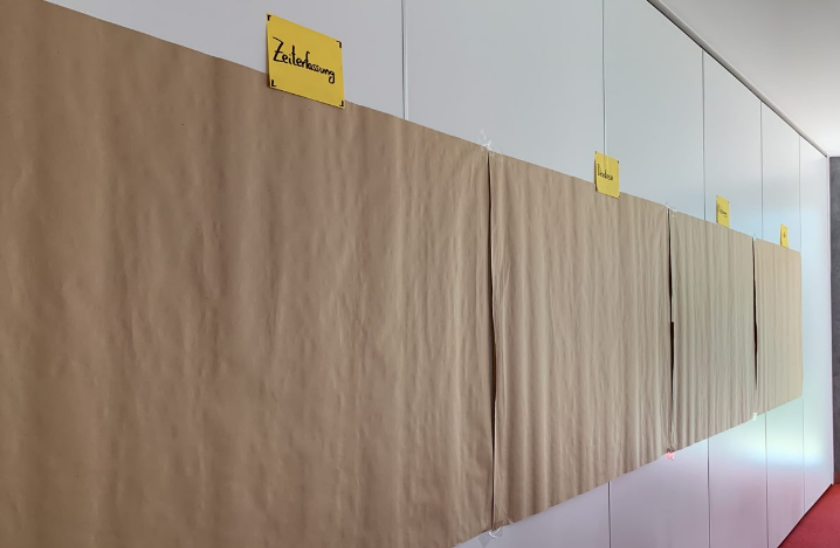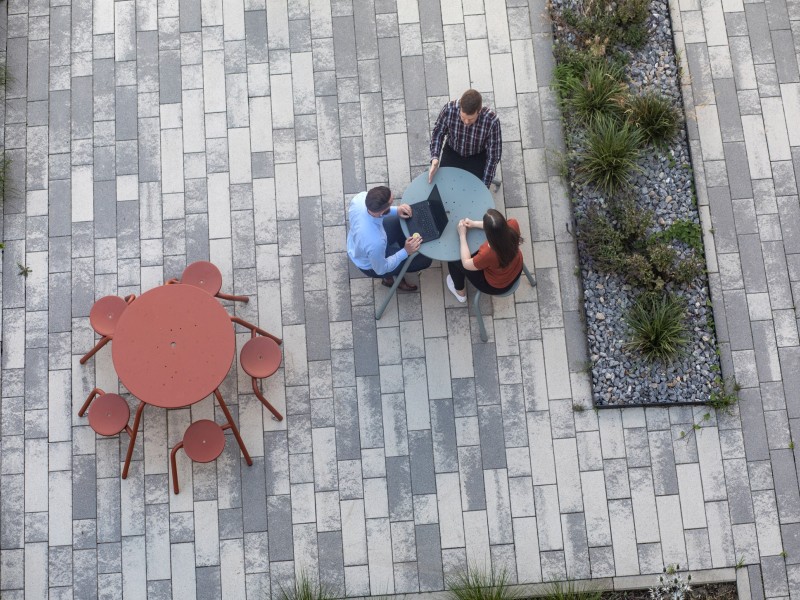12. January 2021 By Lisette Korte
The brown paper method – versatile process mapping
Digitalisation is finding its way into every aspect of life. Companies and authorities are also becoming increasingly aware that something needs to change and want to optimise their workflows. If they are to digitalise these processes and workflows, they first need to know what they are. One of the traditional methods for recording processes is the brown paper method.
This is a results-oriented approach and it is based on the people involved in the process meeting in person in a workshop. The participants work out the process together and draw it out on the brown paper.
Preparation
The reason as to why the processes are being recorded defines which process needs to be looked at in more detail. It also quickly becomes apparent who should participate in the workshop and who needs to participate in order to develop a meaningful result based on the process.
A high-level process structure or a process map helps to show which section or sub-process of the company’s processes is the focus of the workshop.
All of the organisational aspects of the workshop such as the participants, date, duration, room, equipment and resources are clarified during the preparation phase.
Holding the workshop
You don’t need a vast array of tools to hold the workshop – just a long roll of brown wrapping paper, enough felt pens, tape and some suitably sized sticky notes. Flip charts are also helpful if you want to make additional notes.
The goal of the workshop is for the participants to work out the process together on the brown paper wall and then agree afterwards that this process will be carried out in exactly the same way.

An expert in the method is on hand to guide the participants through the day and to stimulate the thought and work processes by asking questions to prompt them:
- What’s the next step?
- Who is involved in this step?
- Are there any dependencies or frameworks – deadlines, for instance?
- Is this done regularly or is it a one-off step?
If weak points, conflicts or opportunities for improvement arise while mapping the process, these can be marked with a red lightning bolt on the respective map. It’s important to always keep the given level of detail in mind so that the least relevant details are not discussed for the longest amount of time.
To create a target process, all of the marked maps are discussed afterwards and this can then be modelled on another wall in a suitable form. The following prompting questions might help uncover potential for optimisation:
- What is missing or where is too much work being done?
- Where is there room for improvement?
- Where do media disruptions or errors occur most often?
- Who is responsible?
Follow-up
After the workshop has finished, the recorded processes are modelled with the help of a software tool. All of the improvement and optimisation measures that have been uncovered are reflected back to the participants so that further action can be taken.
The method in practice
Workshops at customer sites are a rarity during the Covid-19 pandemic. A method such as the brown paper method is difficult to use at a time like this, but not impossible. By tweaking the method a little, it can be used in on-site workshops or completely remotely, despite the social distancing and hygiene rules.
In my role as an expert in the method, I have conducted this type of workshop together with my project team during the pandemic using an adapted methodology. We were commissioned by a customer from the public sector to create a digitalisation concept, which mainly consisted of recording actual processes and modelling target processes. So of course it was clear that we had to add an interactive element. The processes should be modelled directly on the brown paper using Business Process Model and Notation (BPMN) to avoid downstream interpretation on our part.
That allowed us to plan and organise everything together with the customer. The aim was to work out around 25 actual processes and 25 target process across five workshops.
While the first workshop saw the participants (in full compliance with social distancing and hygiene rules) develop a few processes in small groups on their own and then model them after they had been introduced to the method, this became less and less the case as the workshops went on.

Accordingly, plan B was to create a live model while the discussions were still happening. No sooner said than done. I helped model the processes step by step while the participants were reflecting on and discussing the work processes, dependencies and frameworks. Thanks to the standard BPMN and the automation elements provided by the modelling tool Camunda, all of the parallelised processes, dependencies and loops could be represented step by step.
The processes were then modelled in Camunda after the workshops. The result was 50 modelled processes that show exactly how the people involved currently work and how to minimise the source of media disruptions in the future.
Conclusion
The brown paper method is as flexible a method as you need it to be as it provides you with tools and frameworks. With the right modelling method and with the involvement of the participants, the results of brown paper workshops are not downstream interpretations on the part of the moderator, but a jointly developed process in which all of the participants have a role.
Would you like to learn more about exciting topics from the world of adesso? Then check out our latest blog posts.

